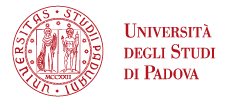PRIN 2022 / Meneghetti

Acronimo: H-Joints
Titolo: Hybrid joints between dissimilar metal materials for lightweight structures of environmentally-friendly vehicles
Coordinatore: prof. Giovanni MENEGHETTI - Dipartimento di Ingegneria Industriale-Università degli Studi di PADOVA
Partern-Unità di ricerca: Università di PISA, Università degli Studi di CASSINO e del LAZIO MERIDIONALE, Università degli Studi di SALERNO, Università degli Studi di FERRARA
Bando: PRIN 2022 - Decreto Direttoriale n. 104 del 02-02-2022
Durata: 28/09/2023 – 27/09/2025 (24 mesi)
Budget totale progetto: € 316.880,00
Abstract del progetto
In several industrial sectors the need for lightweight, safe and fitted for purpose mechanical structures are of primary importance to improve fuel efficiency and to decrease manufacturing costs. Construction technology of vehicles aims at these purposes according to the European Green Deal, to which a significative contribution comes from the mission area “climate-neutral and smart cities” of the Horizon Europe research and innovation program. Since emission and safety regulations are becoming increasingly stringent, application-oriented material selection is needed, and, consequently, joining dissimilar materials becomes an efficient solution. The focus of this project are the joints in dissimilar metal materials obtained by fusion welding or cold-forming processes adopted primarily in the construction machinery, automotive, light vehicles and railway sectors. Steel-aluminium joints obtained by cold forming and austempered ductile iron to steel joints obtained by fusion welding are investigated in this project in view of fatigue critical structural applications. In Standards in force this topic is not covered and the design approaches to structural durability suggested therein are simple, but lack in generality, or they are of general application, but often computationally too expensive to be applied in real applications. Experimental testing, theoretical modelling and design rule formulation are the activities foreseen, in order to contribute bridging the gap between basic research and industrial applications. An extensive experimental campaign is performed to evaluate the metallurgical, geometrical and the mechanical properties of the joints in order to define and validate a CAE-based simulation chain from joint manufacturing to fatigue design. The first output of the project will be the basic fatigue design curves, which are not available for hybrid joints in present Standards in force. Though nominal stress-based approaches are still appealing, particularly at a preliminary design level, the affordability of numerical analyses in the industry encourages the use of more refined local approaches, where stress concentrations at the critical crack initiation points due to the local geometry can be taken into account, along with the effects of the manufacturing process, i.e. for example metallurgical properties and residual stress fields. In this context a robust theoretical framework is provided by local approaches, which proved to be reliable in structural durability evaluation of homogeneous welded joints. The entire CAE simulation process is implemented in commercial software packages with focus on computational efficiency and accuracy in structural durability estimations.





